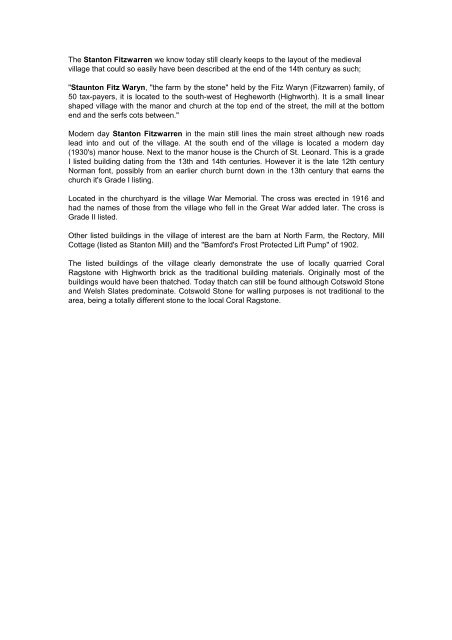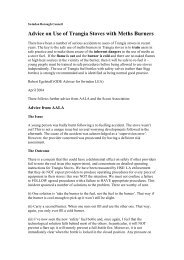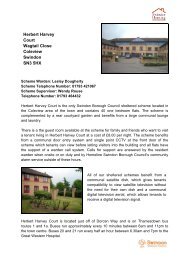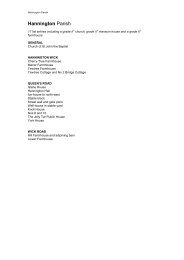Stanton Fitzwarren
Stanton Fitzwarren
Stanton Fitzwarren
Create successful ePaper yourself
Turn your PDF publications into a flip-book with our unique Google optimized e-Paper software.
The <strong>Stanton</strong> <strong>Fitzwarren</strong> we know today still clearly keeps to the layout of the medieval<br />
village that could so easily have been described at the end of the 14th century as such;<br />
"Staunton Fitz Waryn, "the farm by the stone" held by the Fitz Waryn (<strong>Fitzwarren</strong>) family, of<br />
50 tax-payers, it is located to the south-west of Hegheworth (Highworth). It is a small linear<br />
shaped village with the manor and church at the top end of the street, the mill at the bottom<br />
end and the serfs cots between."<br />
Modern day <strong>Stanton</strong> <strong>Fitzwarren</strong> in the main still lines the main street although new roads<br />
lead into and out of the village. At the south end of the village is located a modern day<br />
(1930's) manor house. Next to the manor house is the Church of St. Leonard. This is a grade<br />
I listed building dating from the 13th and 14th centuries. However it is the late 12th century<br />
Norman font, possibly from an earlier church burnt down in the 13th century that earns the<br />
church it's Grade I listing.<br />
Located in the churchyard is the village War Memorial. The cross was erected in 1916 and<br />
had the names of those from the village who fell in the Great War added later. The cross is<br />
Grade II listed.<br />
Other listed buildings in the village of interest are the barn at North Farm, the Rectory, Mill<br />
Cottage (listed as <strong>Stanton</strong> Mill) and the "Bamford's Frost Protected Lift Pump" of 1902.<br />
The listed buildings of the village clearly demonstrate the use of locally quarried Coral<br />
Ragstone with Highworth brick as the traditional building materials. Originally most of the<br />
buildings would have been thatched. Today thatch can still be found although Cotswold Stone<br />
and Welsh Slates predominate. Cotswold Stone for walling purposes is not traditional to the<br />
area, being a totally different stone to the local Coral Ragstone.










